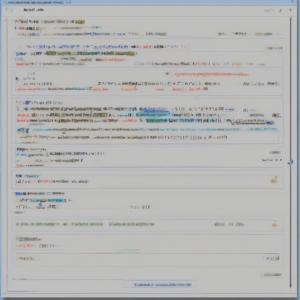San Diego Pest Control: Your Comprehensive Guide to Pest-Free Living
San Diego’s idyllic climate, while perfect for residents, also creates a haven for various pests. From the common cockroach to the more concerning termite, understanding and effectively managing pest infestations is crucial for maintaining a healthy and comfortable home. This comprehensive guide delves into the world of San Diego pest control, offering insights into common pests, prevention strategies, and effective treatment options.
Understanding Common San Diego Pests
San Diego’s diverse environment supports a wide range of pests. Knowing which pests are prevalent in your area is the first step towards effective pest control.
Ants
- Types: San Diego is home to several ant species, including carpenter ants, pavement ants, and odorous house ants. Each species has unique behaviors and nesting preferences.
- Identification: Identifying the specific ant species is essential for targeted treatment. Observe their size, color, and behavior to narrow down possibilities.
- Prevention: Proper sanitation, sealing cracks and crevices, and eliminating food sources are key to ant prevention.
Cockroaches
- Types: German cockroaches, American cockroaches, and brown-banded cockroaches are commonly found in San Diego homes and businesses.
- Identification: Cockroaches are easily identified by their flattened bodies, long antennae, and rapid movements.
- Prevention: Maintaining cleanliness, eliminating moisture sources, and sealing entry points are vital in preventing cockroach infestations.
Termites
- Types: Subterranean termites are the most common type in San Diego, posing significant structural damage risks.
- Identification: Identifying termite activity requires a keen eye. Look for mud tubes, discarded wings, and signs of wood damage.
- Prevention: Regular termite inspections, proper soil moisture control, and termite barriers are crucial for prevention.
Rodents
- Types: Mice and rats are common rodent pests in San Diego, often attracted by food and shelter.
- Identification: Look for droppings, gnaw marks, and signs of nesting activity to identify rodent infestations.
- Prevention: Sealing entry points, removing clutter, and securing food sources are essential for preventing rodent problems.
Other Pests
- Bed Bugs: These tiny insects feed on human blood, causing itchy bites and discomfort.
- Spiders: While most spiders are harmless, some species can pose a threat. Identifying venomous spiders is crucial for safety.
- Fleas: Fleas can infest pets and homes, causing itching and discomfort.
- Ticks: Ticks are known vectors for diseases, requiring careful monitoring and removal.
Pest Control Strategies: Prevention and Treatment
Effective pest control involves a multi-pronged approach combining preventative measures and targeted treatments.
Prevention
- Sanitation: Maintaining a clean environment is fundamental. Regularly clean surfaces, remove clutter, and promptly dispose of garbage.
- Moisture Control: Pests thrive in moist environments. Repair leaks, ventilate damp areas, and ensure proper drainage.
- Structural Integrity: Seal cracks and crevices in walls, floors, and windows to prevent pest entry.
- Food Storage: Store food in airtight containers, clean up spills immediately, and avoid leaving pet food out overnight.
- Landscaping: Maintain a well-maintained lawn, trim overhanging branches, and remove debris from around the house.
Treatment Options
- DIY Pest Control: For minor infestations, some DIY methods may be effective. However, for severe infestations, professional help is recommended.
- Professional Pest Control Services: Professional pest control companies offer a range of services, including inspections, treatment, and preventative measures. They have access to more powerful and effective treatments.
- Integrated Pest Management (IPM): IPM emphasizes a holistic approach, using a combination of methods to minimize pesticide use while effectively controlling pests.
Choosing a San Diego Pest Control Company
Selecting the right pest control company is crucial for effective and safe pest management. Consider the following factors:
- Experience and Expertise: Look for a company with extensive experience in dealing with San Diego’s specific pests.
- Licensing and Insurance: Ensure the company is properly licensed and insured to protect your property and safety.
- Treatment Methods: Inquire about the company’s treatment methods and their commitment to environmentally friendly practices.
- Customer Reviews and Testimonials: Read online reviews and testimonials to gauge the company’s reputation and customer satisfaction.
- Pricing and Contracts: Compare pricing and contract terms from different companies before making a decision.
Specific Pest Concerns in San Diego
San Diego’s unique environment presents specific pest challenges. Understanding these challenges is crucial for effective pest control.
Termites and Coastal Areas
Coastal areas are particularly vulnerable to termite infestations due to high humidity and soil moisture. Regular inspections and preventative measures are essential.
Drywood Termites in Older Homes
Older homes in San Diego may be susceptible to drywood termite infestations. These termites live within the wood itself, making detection and treatment more challenging.
Rodent Activity in Urban Areas
Urban areas often experience higher rodent activity due to readily available food and shelter. Proper sanitation and structural maintenance are crucial in preventing infestations.
Pest Control During Different Seasons
Pest activity varies throughout the year. Understanding seasonal pest pressures allows for targeted prevention and treatment strategies.
Legal and Regulatory Aspects of San Diego Pest Control
San Diego, like other cities, has regulations governing pest control practices. Understanding these regulations is crucial for both homeowners and pest control professionals.
- Licensing Requirements: Pest control operators must obtain proper licenses to operate within the city.
- Pesticide Use Restrictions: Specific regulations govern the use of pesticides, prioritizing safety and environmental protection.
- Reporting Requirements: Certain pest infestations may require reporting to local authorities.
Staying Informed about San Diego Pest Control
Staying informed about the latest pest control methods and regulations is vital for effective pest management.
- Local Resources: Consult local agricultural extension offices and environmental agencies for information and guidance.
- Online Resources: Numerous online resources offer valuable information on pest identification, prevention, and treatment.
- Professional Consultations: Regular consultations with pest control professionals can help prevent and address pest problems promptly.





